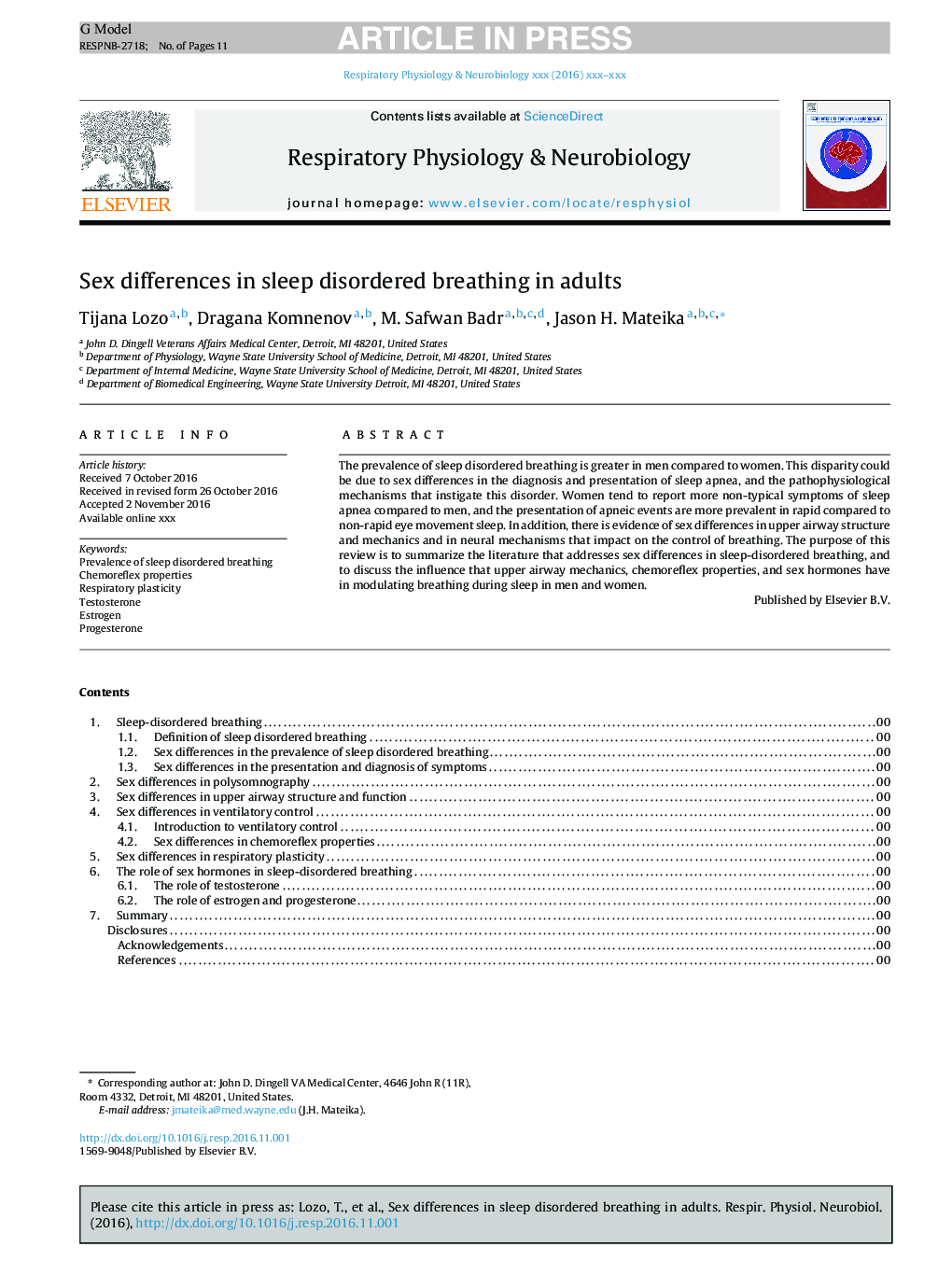| Article ID | Journal | Published Year | Pages | File Type |
|---|---|---|---|---|
| 5594098 | Respiratory Physiology & Neurobiology | 2017 | 11 Pages |
Abstract
The prevalence of sleep disordered breathing is greater in men compared to women. This disparity could be due to sex differences in the diagnosis and presentation of sleep apnea, and the pathophysiological mechanisms that instigate this disorder. Women tend to report more non-typical symptoms of sleep apnea compared to men, and the presentation of apneic events are more prevalent in rapid compared to non-rapid eye movement sleep. In addition, there is evidence of sex differences in upper airway structure and mechanics and in neural mechanisms that impact on the control of breathing. The purpose of this review is to summarize the literature that addresses sex differences in sleep-disordered breathing, and to discuss the influence that upper airway mechanics, chemoreflex properties, and sex hormones have in modulating breathing during sleep in men and women.
Related Topics
Life Sciences
Biochemistry, Genetics and Molecular Biology
Physiology
Authors
Tijana Lozo, Dragana Komnenov, M. Safwan Badr, Jason H. Mateika,
